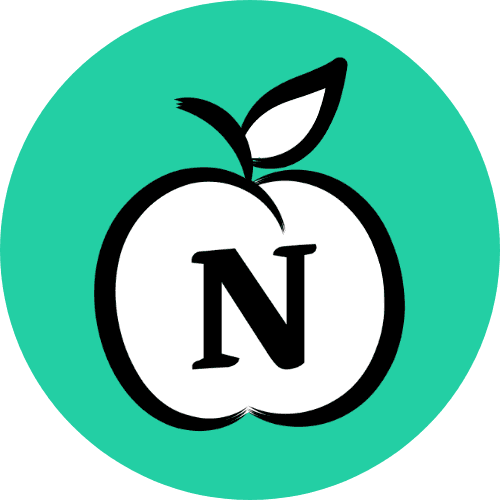Modern Teaching Handbook
Master modern education with the all-in-one resource for educators. Get your free copy now!



10 Ideas for Building a Peer-to-Peer Recognition Culture
10 Ideas for Building a Peer-to-Peer Recognition Culture
10 Ideas for Building a Peer-to-Peer Recognition Culture

Article by
Milo
ESL Content Coordinator & Educator
ESL Content Coordinator & Educator
All Posts
In today's workplace, employee recognition has evolved far beyond the annual performance review. A remarkable 71% of employees would be less likely to leave their organization if they received recognition more frequently. This shift toward peer-to-peer recognition isn't just a feel-good initiative—it's becoming essential for companies that want to boost engagement, retain talent, and create a thriving workplace culture.
In today's workplace, employee recognition has evolved far beyond the annual performance review. A remarkable 71% of employees would be less likely to leave their organization if they received recognition more frequently. This shift toward peer-to-peer recognition isn't just a feel-good initiative—it's becoming essential for companies that want to boost engagement, retain talent, and create a thriving workplace culture.
Modern Teaching Handbook
Master modern education with the all-in-one resource for educators. Get your free copy now!

Modern Teaching Handbook
Master modern education with the all-in-one resource for educators. Get your free copy now!

Modern Teaching Handbook
Master modern education with the all-in-one resource for educators. Get your free copy now!

While traditional top-down approaches still have their place, the power of colleagues appreciating each other's contributions creates a more authentic, continuous feedback loop that resonates throughout the organization. Let's explore 10 practical ideas for building this culture of appreciation.

Foundation Elements for Peer-to-Peer Recognition Success
Before implementing specific recognition programs, certain foundational elements must be in place. These building blocks ensure your online employee recognition ideas take root and flourish within your organization.
Creating Psychological Safety for Recognition Exchange
For peer-to-peer recognition to thrive, employees need to feel safe giving and receiving feedback. This means cultivating an environment where team members can express appreciation without fear of judgment or awkwardness.
Leaders play a crucial role here by modeling vulnerable appreciation behaviors. When executives publicly thank colleagues for specific contributions, they signal that recognition is valued throughout the organization. Try implementing regular "appreciation rounds" in team meetings where everyone shares one thing they appreciate about a colleague's recent work.
Designing Recognition Values That Align With Company Mission
Effective recognition isn't random—it's strategically aligned with your core values. When creating your program, explicitly map recognition criteria to your organizational mission and desired workplace culture.
For example, if innovation is a core value, develop specific recognition categories that celebrate creative thinking and problem-solving. This alignment ensures that every "thank you" reinforces what matters most to your company's success.
The foundation you build will determine how effectively your recognition initiatives take root. With these elements in place, you're ready to implement specific strategies.
Strategic Implementation Ideas for Employee Recognition Programs
Now let's explore concrete employee recognition ideas that can transform how your team members appreciate each other.

Idea #1 - Micro-Recognition Moments Throughout the Workday
Small, frequent moments of recognition often have more impact than grand gestures. Create opportunities for "micro-recognition" by implementing short appreciation rituals in regular meetings.
For remote teams, digital appreciation boards provide an instant way to celebrate wins. These can be as simple as a dedicated Slack channel or as robust as a purpose-built recognition platform where employees can post quick notes of appreciation tied to specific accomplishments.
Idea #2 - Cross-Departmental Recognition Challenges
Silos kill collaboration. Break them down with recognition challenges that connect different teams. Monthly inter-department appreciation competitions create friendly rivalry while fostering cross-functional relationships.
Try pairing marketing with engineering, or sales with product development, challenging each group to recognize contributions from their partner team. This not only boosts morale but reveals collaboration opportunities that might otherwise remain hidden.
Idea #3 - Skill-Based Peer Mentorship Recognition Programs
Knowledge sharing deserves celebration. Create systems that recognize employees who help colleagues develop new skills through mentorship or training.
Consider implementing "expert badges" for team members who frequently consult on their areas of expertise. This recognition encourages a culture of continuous learning while acknowledging those who make time to help others grow.
With these implementation ideas, your organization can begin shifting toward a more appreciative culture. And technology can help scale these efforts.
Technology-Driven Employee Engagement Strategies
Technology offers powerful tools to enhance and scale your employee engagement strategies, making recognition more accessible and consistent.
Idea #4 - AI-Powered Recognition Suggestions and Timing
AI can help prompt recognition opportunities that humans might miss. Despite skepticism—53% of employees doubt AI can provide meaningful recognition—thoughtful implementation can work.
The key is using AI as a tool that enhances human connection rather than replaces it. For example, AI can analyze work patterns to suggest optimal recognition moments, while humans provide the authentic appreciation that colleagues crave.
Idea #5 - Gamified Recognition Systems with Real-Time Analytics
Make recognition fun with point-based systems and meaningful rewards. Gamification taps into our natural competitive spirit while creating visibility around appreciation.
The most effective systems celebrate both givers and receivers of recognition, encouraging a two-way appreciation flow. Leaderboards can showcase top contributors, while real-time analytics help leaders identify recognition patterns and gaps.
Idea #6 - Virtual Reality Recognition Experiences for Remote Teams
For distributed teams, virtual reality offers immersive ways to celebrate accomplishments. Though still emerging, VR technology can create memorable recognition experiences that transcend distance.
Imagine virtual team celebration spaces where remote employees gather for recognition ceremonies or personalized recognition delivery experiences that make digital appreciation feel more tangible and special.
These technology-driven approaches can scale your employee engagement strategies while maintaining the human connection that makes recognition meaningful.
Idea #7 – Personalized Milestone Celebrations
Generic recognition can feel flat. Instead, celebrate personal and professional milestones in ways that truly resonate with each employee. Whether it’s recognizing a work anniversary, project launch, or even personal wins like completing a marathon or buying a house, tailored recognition shows that the company sees the individual behind the job title.
Use employee preference data to personalize the celebration—some might prefer a private note, others a public shoutout, or even a digital reward of their choice.
Idea #8 – Recognition-Driven Feedback Loops
Incorporate recognition into regular feedback practices. Instead of focusing only on what needs improvement, encourage managers and peers to highlight what’s working well, and why. This reinforces positive behaviors and builds confidence.
Include a “Recognition Moment” at the start of performance reviews, team huddles, or retrospectives. This balances growth conversations with positivity and gratitude.
Idea #9 – Recognition Tokens With Spendable Value
Move beyond words with digital recognition tokens—points employees can collect and redeem for custom rewards like bulk gift cards, digital payouts, or extra time off. This system turns appreciation into something tangible and motivating without losing authenticity.
Use platforms that offer gift card APIs or integrate with popular options like Amazon bulk gift cards to let employees choose rewards they value.
Idea #10 – Leadership Spotlights and Appreciation Takeovers
Turn the spotlight on leadership to set the tone. Have senior leaders “take over” recognition platforms for a day or week to share appreciation messages with teams across the organization.
These unexpected acknowledgments carry weight and model the importance of showing gratitude. Combine this with video messages, handwritten notes, or surprise recognitions during town halls for greater impact.
Final Thoughts: Appreciation is Power
Creating a peer-to-peer culture of recognition does not occur in one day, but the dividends of the investment are out of this world. Employees who know they are appreciated by their colleagues will be ready and willing to give their best at work, and this will lead to innovation, teamwork, and productivity. Just by using some of these ideas, you will make a start in establishing a work environment where people are rewarded and everyone succeeds. Ultimately, recognition is not a perk; it is a requirement in the creation of the high-performance culture required by organizations today.
Common Questions About Building a Recognition Culture
1. What can we do to improve peer-to-peer recognition at our workplace?
The first step is to have an organized program that has a wide array of reward choices. Be inclusive, celebrate in the open, inject unexpected recognition, give the details of the recognition, and ensure recognition is modeled by leaders at all times.
2. How can I motivate the colleagues to identify with each other?
Express appreciation in meetings by making it publicly available through group communication systems, and having an official recognition system that allows easy and quick praise delivery.
3. Do you have an easy example of peer-to-peer recognition?
"Once again, thanks a lot for your assistance with the presentation to the client last Monday. My problem with the data visualization section was getting in the way, and your wild idea gave our proposal a new look. The quality of your design is amazing!"
While traditional top-down approaches still have their place, the power of colleagues appreciating each other's contributions creates a more authentic, continuous feedback loop that resonates throughout the organization. Let's explore 10 practical ideas for building this culture of appreciation.

Foundation Elements for Peer-to-Peer Recognition Success
Before implementing specific recognition programs, certain foundational elements must be in place. These building blocks ensure your online employee recognition ideas take root and flourish within your organization.
Creating Psychological Safety for Recognition Exchange
For peer-to-peer recognition to thrive, employees need to feel safe giving and receiving feedback. This means cultivating an environment where team members can express appreciation without fear of judgment or awkwardness.
Leaders play a crucial role here by modeling vulnerable appreciation behaviors. When executives publicly thank colleagues for specific contributions, they signal that recognition is valued throughout the organization. Try implementing regular "appreciation rounds" in team meetings where everyone shares one thing they appreciate about a colleague's recent work.
Designing Recognition Values That Align With Company Mission
Effective recognition isn't random—it's strategically aligned with your core values. When creating your program, explicitly map recognition criteria to your organizational mission and desired workplace culture.
For example, if innovation is a core value, develop specific recognition categories that celebrate creative thinking and problem-solving. This alignment ensures that every "thank you" reinforces what matters most to your company's success.
The foundation you build will determine how effectively your recognition initiatives take root. With these elements in place, you're ready to implement specific strategies.
Strategic Implementation Ideas for Employee Recognition Programs
Now let's explore concrete employee recognition ideas that can transform how your team members appreciate each other.

Idea #1 - Micro-Recognition Moments Throughout the Workday
Small, frequent moments of recognition often have more impact than grand gestures. Create opportunities for "micro-recognition" by implementing short appreciation rituals in regular meetings.
For remote teams, digital appreciation boards provide an instant way to celebrate wins. These can be as simple as a dedicated Slack channel or as robust as a purpose-built recognition platform where employees can post quick notes of appreciation tied to specific accomplishments.
Idea #2 - Cross-Departmental Recognition Challenges
Silos kill collaboration. Break them down with recognition challenges that connect different teams. Monthly inter-department appreciation competitions create friendly rivalry while fostering cross-functional relationships.
Try pairing marketing with engineering, or sales with product development, challenging each group to recognize contributions from their partner team. This not only boosts morale but reveals collaboration opportunities that might otherwise remain hidden.
Idea #3 - Skill-Based Peer Mentorship Recognition Programs
Knowledge sharing deserves celebration. Create systems that recognize employees who help colleagues develop new skills through mentorship or training.
Consider implementing "expert badges" for team members who frequently consult on their areas of expertise. This recognition encourages a culture of continuous learning while acknowledging those who make time to help others grow.
With these implementation ideas, your organization can begin shifting toward a more appreciative culture. And technology can help scale these efforts.
Technology-Driven Employee Engagement Strategies
Technology offers powerful tools to enhance and scale your employee engagement strategies, making recognition more accessible and consistent.
Idea #4 - AI-Powered Recognition Suggestions and Timing
AI can help prompt recognition opportunities that humans might miss. Despite skepticism—53% of employees doubt AI can provide meaningful recognition—thoughtful implementation can work.
The key is using AI as a tool that enhances human connection rather than replaces it. For example, AI can analyze work patterns to suggest optimal recognition moments, while humans provide the authentic appreciation that colleagues crave.
Idea #5 - Gamified Recognition Systems with Real-Time Analytics
Make recognition fun with point-based systems and meaningful rewards. Gamification taps into our natural competitive spirit while creating visibility around appreciation.
The most effective systems celebrate both givers and receivers of recognition, encouraging a two-way appreciation flow. Leaderboards can showcase top contributors, while real-time analytics help leaders identify recognition patterns and gaps.
Idea #6 - Virtual Reality Recognition Experiences for Remote Teams
For distributed teams, virtual reality offers immersive ways to celebrate accomplishments. Though still emerging, VR technology can create memorable recognition experiences that transcend distance.
Imagine virtual team celebration spaces where remote employees gather for recognition ceremonies or personalized recognition delivery experiences that make digital appreciation feel more tangible and special.
These technology-driven approaches can scale your employee engagement strategies while maintaining the human connection that makes recognition meaningful.
Idea #7 – Personalized Milestone Celebrations
Generic recognition can feel flat. Instead, celebrate personal and professional milestones in ways that truly resonate with each employee. Whether it’s recognizing a work anniversary, project launch, or even personal wins like completing a marathon or buying a house, tailored recognition shows that the company sees the individual behind the job title.
Use employee preference data to personalize the celebration—some might prefer a private note, others a public shoutout, or even a digital reward of their choice.
Idea #8 – Recognition-Driven Feedback Loops
Incorporate recognition into regular feedback practices. Instead of focusing only on what needs improvement, encourage managers and peers to highlight what’s working well, and why. This reinforces positive behaviors and builds confidence.
Include a “Recognition Moment” at the start of performance reviews, team huddles, or retrospectives. This balances growth conversations with positivity and gratitude.
Idea #9 – Recognition Tokens With Spendable Value
Move beyond words with digital recognition tokens—points employees can collect and redeem for custom rewards like bulk gift cards, digital payouts, or extra time off. This system turns appreciation into something tangible and motivating without losing authenticity.
Use platforms that offer gift card APIs or integrate with popular options like Amazon bulk gift cards to let employees choose rewards they value.
Idea #10 – Leadership Spotlights and Appreciation Takeovers
Turn the spotlight on leadership to set the tone. Have senior leaders “take over” recognition platforms for a day or week to share appreciation messages with teams across the organization.
These unexpected acknowledgments carry weight and model the importance of showing gratitude. Combine this with video messages, handwritten notes, or surprise recognitions during town halls for greater impact.
Final Thoughts: Appreciation is Power
Creating a peer-to-peer culture of recognition does not occur in one day, but the dividends of the investment are out of this world. Employees who know they are appreciated by their colleagues will be ready and willing to give their best at work, and this will lead to innovation, teamwork, and productivity. Just by using some of these ideas, you will make a start in establishing a work environment where people are rewarded and everyone succeeds. Ultimately, recognition is not a perk; it is a requirement in the creation of the high-performance culture required by organizations today.
Common Questions About Building a Recognition Culture
1. What can we do to improve peer-to-peer recognition at our workplace?
The first step is to have an organized program that has a wide array of reward choices. Be inclusive, celebrate in the open, inject unexpected recognition, give the details of the recognition, and ensure recognition is modeled by leaders at all times.
2. How can I motivate the colleagues to identify with each other?
Express appreciation in meetings by making it publicly available through group communication systems, and having an official recognition system that allows easy and quick praise delivery.
3. Do you have an easy example of peer-to-peer recognition?
"Once again, thanks a lot for your assistance with the presentation to the client last Monday. My problem with the data visualization section was getting in the way, and your wild idea gave our proposal a new look. The quality of your design is amazing!"
Modern Teaching Handbook
Master modern education with the all-in-one resource for educators. Get your free copy now!

Modern Teaching Handbook
Master modern education with the all-in-one resource for educators. Get your free copy now!

Modern Teaching Handbook
Master modern education with the all-in-one resource for educators. Get your free copy now!

Table of Contents
Modern Teaching Handbook
Master modern education with the all-in-one resource for educators. Get your free copy now!
2025 Notion4Teachers. All Rights Reserved.
2025 Notion4Teachers. All Rights Reserved.
2025 Notion4Teachers. All Rights Reserved.
2025 Notion4Teachers. All Rights Reserved.







